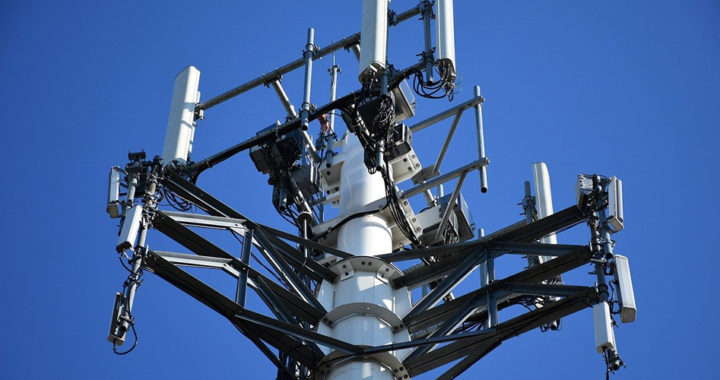The Frequency Range 1 or sub-6 GHz and Frequency Range 2 or mmWave are two of the frequency specifications identified for 5G New Radio and thus, defined and allocated for 5G cellular network technology. Between these two, the mmWave specification maximizes the full network potential of fifth-generation wireless connectivity.
Pros: Advantages of mmWave 5G
Drastic improvements in network performance represent the collective advantage of mmWave 5G. When compared to sub-6 GHz networks, as well as 4G LTE and LTE Advanced networks, users connected to networks running on the millimeter wave specification will experience faster data transmission speeds, higher bandwidth, and dramatic reductions in network latency,
Note that electromagnetic radiation with a high frequency is associated with a faster movement of signal-bearing electromagnetic waves. Hence, higher frequencies and shorter wavelengths translate to better wireless communication. Note that in Wi-Fi technology, this fact is better illustrated by the difference between Wi-Fi 2.4 GHz and Wi-Fi 5 GHz.
The millimeter wave specification uses electromagnetic radiation within the 24 GHz and 300 GHz range, or more specifically, within the upper limits of radio waves and the range of microwaves. In comparison, LTE, LTE Advances, and sub-6 GHz networks run on below 1 GHz and within the mid-range bands of 3.4 GHz and 6 GHz.
Below are the specific benefits and applications of 5G networks based on the millimeter wave specification:
• Compared to Sub-6 GHz with data transmission speeds of around 50 Mbps to 200 Mbps, as well as LTE Advanced that averages around 50 Mbps, mmWave 5G can provide a data transmission speed of 200 Mbps to more than 1 Gbps.
• Latency is fewer than 10 milliseconds. LTE and LTE Advanced have a latency of 20 to 30 milliseconds. Remember that network latency corresponds to the time it takes for data to be transferred between its source and its destination.
• Networks based on the mmWave specification have a bandwidth of around 1 Gbps. Note that bandwidth is the maximum amount of data transmitted over a network in a given time. Higher bandwidth support faster and efficient data transmission.
• The network performance of mmWave 5G makes it a comparable alternative to fiber-based wired communication, thus opening new opportunities for wireless broadband services for commercial and residential applications.
• Furthermore, because of the dramatic performance improvements, the technology supports current and advanced wireless communication applications to include ultra-high definition streaming, massive Internet of Things, and smart cities, among others.
Cons: Disadvantages of mmWave 5G
Despite its network performance advantages, a critical disadvantage of mmWave 5G when compared to Sub-6 GHz 5G, as well as 4G technologies, is coverage and range limitations. As a backgrounder, electromagnetic waves with higher frequencies cannot travel long distances and are more susceptible to physical obstructions.
Maximizing the full potential of fifth-generation networks based on the millimeter wave specification involves placing hundreds to thousands of smaller cells within a specific area to extend and improve network coverage. Note that Sub-6 GHz 5G network does not have this demanding infrastructure requirement.
The following are the drawbacks and limitations of 5G networks based on the millimeter wave specification:
• Deploying mmWave 5G networks is fundamentally more expensive than deploying 5G networks based on the sub-6 GHz specification because of the need to place several smaller cells in strategic locations to ensure maximum coverage.
• Sub-6 GHz can use the existing infrastructure of 4G networks with some modifications. Also, because the frequencies allocated for the sub-6 GHz specification can travel long distances, the distance between these towers is longer or wider.
• Hence, between the two 5G NR specifications, Sub-6 GHz networks are more practical and suitable for rural areas with populations and structures widely spread across a large geographic area. mmWave 5G networks are more suitable in denser locations.
• There is also an issue involving aesthetics. Placing numerous smaller cells in every corner of a street or portion of a block can affect the beauty of a natural environment or aesthetics of notable humanmade structures.
• Compatibility is another drawback. Not all 5G devices are the same. Some of these devices would only run on Sub-6 GHz networks. Consumers would need to check the underlying radio technology in the devices they are planning to purchase.
• Devices equipped to use the millimeter frequency specification would also suffer from intensive power consumption, especially when connected to the fifth-generation network. Hence, in certain use-case scenarios, it is better to run on 4G or 3G networks.
FURTHER READINGS AND REFERENCES
- Ivankov, Alex. 2021. “5G Technology Explained: How Does It Work, How Is It Different.” Profolus. Available online
- Kumar, A. and Gupta, M. 2018. “A Review on Activities of Fifth Generation Mobile Communication System.” Alexandria Engineering Journal. 57(2): 1125-1135. DOI: 1016/j.aej.2017.01.043
- Parkvall, S., Dahlman, E., Furuskar, A., and Frenne, M. 2017. NR: “The New 5G Radio Access Technology.” IEEE Communications Standards Magazine. 1(4): 24-30. DOI: 1109/mcomstd.2017.1700042
- Pineda, Mathew Emmaniel. 2021. “Sub-6 GHz 5G versus mmWave 5G: The Difference.” Profolus. Available online





